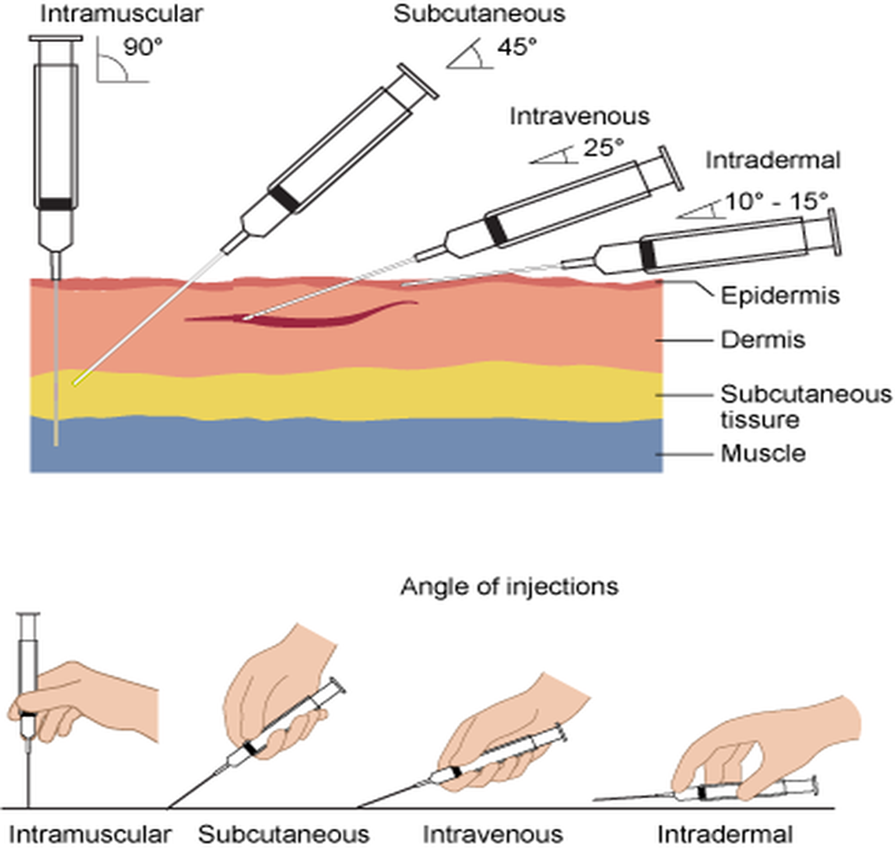A phlebotomist is preparing to perform a venipuncture. Which of the following needle positions should the phlebotomist use?
Bevel down at a 30° angle
Bevel up at a 45° angle
Bevel up at a 30° angle
Bevel down at a 45° angle
The Correct Answer is C
Choice A reason:
Having the bevel down at a 30° angle is not the correct needle position for venipuncture. The bevel of the needle should be facing up to allow for a smoother insertion and to minimize the risk of damaging the vein or causing discomfort to the patient.
Choice B reason:
Positioning the bevel up at a 45° angle is not recommended for venipuncture as this angle is too steep and could lead to the needle penetrating through the vein, potentially causing a hematoma or other complications.
Choice C reason:
The bevel up at a 30° angle is the correct position for venipuncture. This position allows the phlebotomist to insert the needle with the bevel facing upwards, which is the sharpest part of the needle, ensuring a clean entry into the vein. The 30° angle is shallow enough to enter the vein without going through it and causing injury.
Choice D reason:
A bevel down at a 45° angle is incorrect for the same reasons as choice B. Additionally, with the bevel down, the non-beveled side, which is duller, would make the initial contact with the skin, potentially causing more pain and making it more difficult to penetrate the vein.

Nursing Test Bank
Naxlex Comprehensive Predictor Exams
Related Questions
Correct Answer is D
Explanation
Choice A Reason:
Anchoring the vein does not eliminate the need for a tourniquet. The tourniquet is applied to engorge the veins, making them more prominent and easier to puncture. Anchoring is a technique used after the tourniquet has already accomplished this task.
Choice B Reason:
While anchoring the vein can provide a more stable area for needle insertion, which might indirectly reduce pain, its primary purpose is not pain reduction. Pain during needle insertion is more directly influenced by the needle gauge, angle of insertion, and the phlebotomist's technique.
Choice C Reason:
Improving vein identification is not the direct purpose of anchoring. Vein identification is typically done visually and by palpation before the application of the tourniquet and before anchoring the vein. Anchoring is performed to stabilize the vein once it has been identified.
Choice D Reason:
The primary purpose of anchoring the vein is to minimize its movement during venipuncture. This is important because it helps prevent the needle from slipping out of or through the vein, which can cause discomfort and bruising, and may require another puncture attempt.
Correct Answer is D
Explanation
Choice A reason:
The light green tube typically contains lithium heparin and is used for plasma determinations in chemistry. It is not suitable for coagulation studies, such as PT, because heparin is an anticoagulant that would interfere with the test results.
Choice B reason:
The lavender tube contains EDTA, which is an anticoagulant that binds calcium. While it is commonly used for complete blood counts (CBC) and other hematology tests, it is not appropriate for coagulation studies because the binding of calcium would affect the clotting process required for a PT test.
Choice C reason:
The royal blue tube can come with different additives or be additive-free, depending on the color of the closure. It is primarily used for trace element testing, toxicology, and nutrient determinations. The additives in a royal blue tube could potentially contaminate the sample and interfere with the PT test.
Choice D reason:
The light blue tube contains sodium citrate, which is the appropriate anticoagulant for coagulation studies like PT. Sodium citrate works by binding calcium in the blood, preventing clotting. The PT test measures the time it takes for a clot to form after re-calcification, making the light blue tube the correct choice for this test.
Whether you are a student looking to ace your exams or a practicing nurse seeking to enhance your expertise , our nursing education contents will empower you with the confidence and competence to make a difference in the lives of patients and become a respected leader in the healthcare field.
Visit Naxlex, invest in your future and unlock endless possibilities with our unparalleled nursing education contents today
Report Wrong Answer on the Current Question
Do you disagree with the answer? If yes, what is your expected answer? Explain.
Kindly be descriptive with the issue you are facing.
